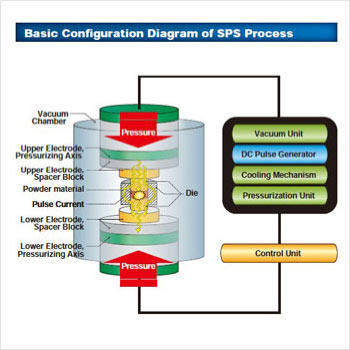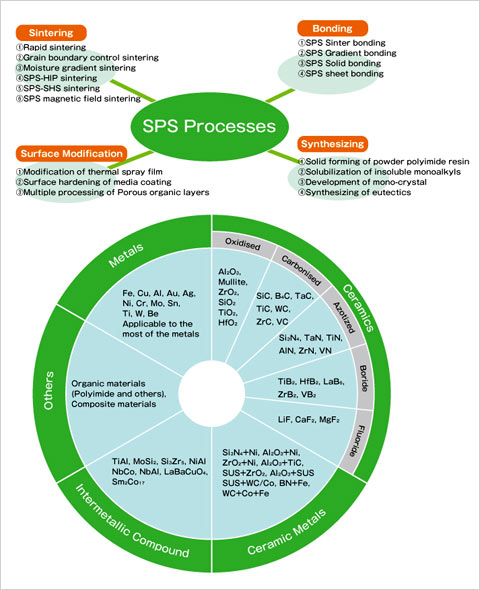What’s SPS ?
Spark Plasma Sintering (SPS) is a method of sintering, bonding and synthesizing materials as well as their surface modification to be performed not only by “mechanical pressurizing” and “heating” of pulse current power like conventional sintering systems but also by electromagnetic energy, heat energy generated in the processing materials themselves and spark plasma energy among particles and/or grains of materials. The latter three factors are the major characteristics of SPS processes. Since versatile kinds of powder materials are applicable, SPS is now regarded as the promised technology for innovative processing in the field of new materials creation.
Now, it is considered that this technology has come into the stage of 5
th generation era to be utilized in the actual production/ manufacturing processes in the infinite range of industries.
Principles of SPS

Advantages of SPS
- 1)
- It is easy to sinter “difficult to sinter” materials and to synthesize “difficult to synthesize” materials.
For example:
*Composition based materials & Multi dimensions based materials
*Materials without binders
- 2)
- Easy densification
- 3)
- Easy to obtain uniform (No-deflection) result
- 4)
- Easy to control grain boundary and grain growth
*Sintering of Nano-phase and /or Nano-construction materials is possible
*Applicable to porous building materials
- 5)
- Short processing time
- 6)
- Processing with comparatively lower temperature
- 7)
- Operations doesn’t need skill
- 8)
- Low running cost
Applicable materials and their purposes
SPS is not only used for the purpose of “Sintering” but also of “Bonding”, “Synthesizing” and “Surface modification” and is applicable to the materials of metals, ceramics, composite materials, polymers and many other materials with the excellent result. Due to its physical feature, SPS can produce compact and high quality materials free from effect of original materials such as particle size, composition and purity.




